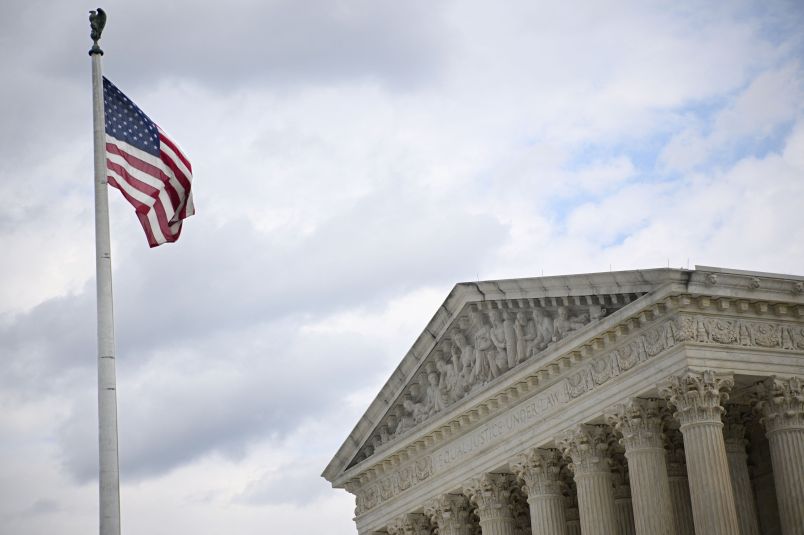In Vance v. Ball State University last year, the Supreme Court undercut workplace protections from harassment. With 25 percent of women and 10 percent of men reporting that they have experienced harassment in the workplace, these watered down protections leave workers who suffer harassment at greater risk and with fewer tools to challenge harassment when it happens. The Fair Employment Protection Act, introduced last Thursday by Senators Tammy Baldwin and Tom Harkin, and Representatives George Miller and Rosa DeLauro is urgently needed to restore strong protections from harassment on the job. Here’s why:
When supervisors harass they are abusing the power given to them by their employers. It can be very hard to say, “Back off!” or to report harassment by a supervisor, because workers know that if they do, their supervisor can make life hard for them, forcing them to work last-minute overtime or in unsafe conditions, forego lunch and bathroom breaks, or even firing them.
The Supreme Court has long recognized the potential for supervisors to abuse their power and the obligation employers have to train them not to. Fifteen years ago in a landmark pair of cases, Burlington v. Ellerth and Faragher v. Boca Raton, the Supreme Court set out strong protections from harassment by a supervisor.
In Faragher, David Silverman, who oversaw lifeguard Beth Ann Faragher’s day-to-day work, said to her, “Date me or clean the toilets for a year.” And Silverman definitely had the power to make good on that threat.
He continued to abuse his power over Faragher by: pantomiming oral sex to her; telling her he would have had sex with her but for one of her features that he found unattractive, and making vulgar and sexual comments about women and their bodies.
The Supreme Court said in that case that employers have a heightened legal obligation to protect employees against such abuses by their supervisors.
And in harassment cases since, when courts have recognized that this heightened legal obligation extends to harassment by supervisors who direct daily work but do not have the power to hire and fire, this has proven critical to workers’ ability to have their day in court.
Take Clara Whitten. Whitten was the assistant store manager at Fred’s Super Dollar store in Greenville, South Carolina. She alleged that on her first day on the job, store manager Matt Green told her she needed to “be good to him and give him what he wanted” if she wanted long weekends off from work, and that he would make her life a “living hell” if she ever took matters “over [his] head.” Green repeatedly pressed his genitals against Whitten’s back, and called her dumb and stupid. He demanded that Whitten meet him in the storeroom in the back of the store.
When she refused because she was afraid of what would happen there, he used his authority to punish her: he ordered her to stay late to clean. He told her to leave the store spotless even if it took all night. When she reported the harassment, the district manager told her she was overreacting and to go on with her day as if nothing had happened.
Whitten brought a lawsuit for harassment. In response, her employer tried to avoid liability by arguing that the court should dismiss her case because Green did not have the power to hire, fire or demote her.
Fortunately, the Fourth Circuit recognized what should be obvious. Green had substantial authority over Whitten. He set her schedule, directed her daily work and had the power to punish her with difficult assignments. The court said she deserved heightened protections from his harassment. And as a result, she got her day in court.
But if her case had been decided after the Supreme Court’s decision in Vance v. Ball State University, the outcome would likely have been very different.
That’s because in Vance the Supreme Court said that employees no longer deserve these heightened protections from harassment by those who direct their daily work, but don’t have the power to hire and fire. This is despite longstanding EEOC guidance making clear that employers’ heightened responsibility to protect against harassment extends to harassment by both harassers with the power to hire and fire and those who direct daily work.
The Vance decision weakens workers’ ability to hold their employers responsible for harassment, and it simultaneously waters down employers’ incentives to train those in positions of authority not to harass and address harassment when it happens.
The question is when does the harasser have sufficient authority to warrant heightened protections? The answer is when the harasser has the authority to – in the words of store manager Matt Green — “make you’re life a living hell.”
In the Vance decision, the Supreme Court got the answer wrong. With the Fair Employment Protection Act, Congress has the opportunity to get it right.
Liz Watson is Director of Workplace Justice for Women and Senior Counsel to the Education and Employment and Cross-cutting Teams at the National Women’s Law Center. Liz focuses on ending workplace discrimination and combating the erosion of wages and working conditions in jobs at the bottom of the labor market, which are most often held by women.
Image via Shutterstock / aerogondo2






